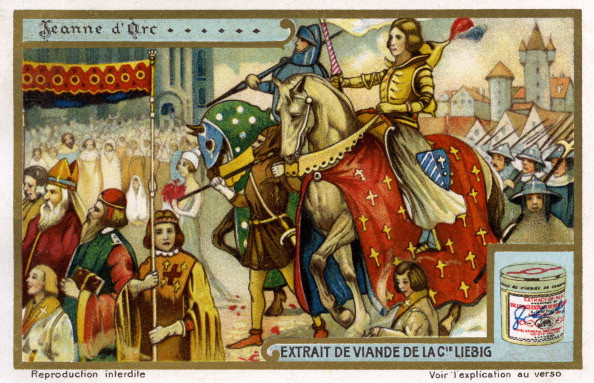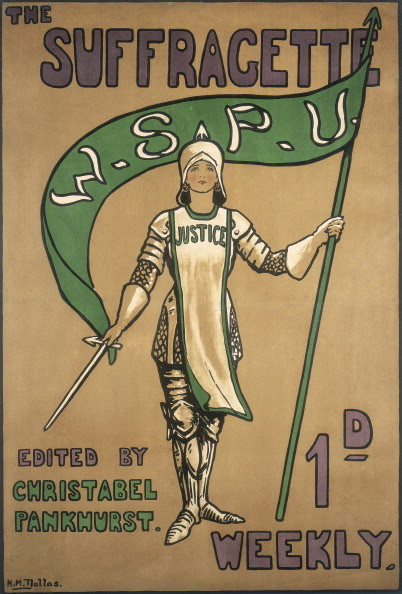Joan of Arc: The legend behind the ring responsible for latest France-UK spat

More than 600 years after her death, Joan of Arc continues to fascinate and divide on both sides of the Channel.
On 21 March, French history theme park Puy du Fou acquired, for a sum of £300,000, what was said to be the maid of Orleans' ring, given to her by her parents . The move was widely seen as a way for right-wing traditionalist Philippe de Villiers, who founded the park, to get his hand on a relic of high religious significance that is representative of French cultural identity.

Since then, a row has erupted between De Villiers and British authorities, who accuse him of having taken the ring out of the country illegally. Indeed, to export items of national and historical importance, which are worth more than £39,219 and which have been in the UK for more than 50 years, buyers need to have a license. This rule was not followed by Puy du Fou.
But beyond this administrative spat, which illustrates how politically and emotionally charged the mythical figure of Joan of Arc still is, historians face another polemic. Some prominent voices have risen to question the very authenticity of the ring.
Unclear origins
When Joan of Arc was burnt to death, in May 1431, all her possessions disappeared with her. Her British and Burgundy enemies didn't want any personal objects to be left behind, so as not to leave relics that could become the object of a cult. The exception was a ring, which she probably received as present, for her first communion. Made out of brass, with three crosses and the names 'Jhesus Maria' engraved on the sides, the ring was supposedly confiscated by the Burgundy family or by a soldier in their army. This French aristocratic house fought with the English against Charles VII – whom Joan regarded as her true king – to take the throne of France.

During her trial, when the ring was not in her possession any more, various references were made to the jewel and she was asked to describe it. Her judges used it to condemn her: they accused her of having bewitched it to serve her dark, heretic intents.
"After the trial, the whereabouts of the ring become unclear. We have very little references to it. It seems to appear periodically in the UK, but until the 20th century, the evidence is not very precise. What is certain is that from 1947, a man named James Hasson becomes the owner of a ring 'linked to Joan of Arc', which is the one that Puy du Fou bought", Olivier Bouzy, historian and co-head of the Joan of Arc centre in France, told IBTimes UK.
Many documents describing the ring and its successive owners, were also given to Puy du Fou by Timeline Auctions (who managed the sale of the relic), to prove that the ring had belonged to Joan of Arc.
Historians have not yet had the opportunity to look at all the documents to evaluate their credibility. Many, like Bouzy, believe it is too early to come to a conclusion without an in-depth analysis of all these sources.
Doubtful historians
One thing is certain: X-ray Fluorescence metal analysis has proven the ring acquired by Puy du Fou was created during Joan of Arc's lifetime, in the 15th century.
The questions about its authenticity comes from the fact historians do not understand how, or why, the British authorities would have received the ring from their Burgundy allies.

The documents that Puy du Fou have shared trace a simple chronology of events. They say the ring was first in possession of cardinal Henry Beaufort, a clergyman on the side of the Burgundy family, and who was present at the maid of Orleans' trial. He gave it to the British noble Cavendish-Bentinck family. It was then passed on to successive generations until it was bought by James Hasson in the 20th century.
Olivier Bouzy doubts this version of events: "I do not understand why the Burgundy family would have let go of the ring, giving it to the British, and even less why they would have wanted it. Joan was their mortal enemy. The British army viewed her as an heretic, they feared her, so they certainly would not have wanted a supposedly bewitched relic belonging to her," he says.
If the ring is actually authentic, Bouzy has another interesting theory as to why it would have ended up in British possession. "It is possible that the ring was brought to the UK much later, after the French Revolution, by a family descending from the Burgundy nobility who sought refuge in England. They could have sold it in order to get money to survive," he hypothesises.
Whatever the truth may be, the historian cautions against too much enthusiasm. This is not the first time objects have been presented as belonging to Joan of Arc. A few years back, Bouzy remembers how bones were presented as fragments of Joan's ribs, but further analysis revealed they were in fact bits of Egyptian mummies.
The significance of the ring

Why do people get so carried away? Take a look at all that has been written on Joan of Arc, on both sides of the Channel, and it is easy to understand why the the ring still causes so much expectations. The maid of Orleans is admired both by the left and by the right of the political spectrum.
In France, she is both an icon for far right devout Catholics and for feminists. In times of social crisis, her icon is often referenced as an emblem of national unity.
Because nothing remains of her, the ring could potentially be the last symbol of her physical existence, and that's why the debates around its authenticity have become important, to all those who recognise the significance of Joan of Arc for French cultural identity.
"Joan is a mythical figure, very important to all French citisens. But for fervent religious personalities, like De Villiers, she is even more. She represents France's catholic and royalist past. This could be a last testimony that this past, for which French Catholics like De Villiers are nostalgic, existed. That's why the debate around the ring's authenticity is so heated", Bouzy points out.
More than a historical or administrative quarrel, the latest spat over Joan's supposed ring is above all a sign that the past and the present often mix, and that her emblematic figure still drives political and spiritual movements today.
© Copyright IBTimes 2025. All rights reserved.






















